The energy transition cannot be solely a question of renewable energies. This is the most obvious conclusion of all the studies that our Energy, Economics and System Dynamics Group (GEEDS) has carried out in its almost ten years of research on the decline of fossil fuels, the limits of renewable energies, and climate change. In order for an energy transition to be carried out with a minimum chance of success, it must be accompanied by many other transitions: social, ecological, cultural and, above all, one that is usually forgotten: the economic transition.
We must be aware that both decarbonization, which would make it possible to avoid catastrophic climate change, and the decline of oil and other natural resources, require enormous technical challenges. In our studies, we have not found ways to solve these challenges that do not involve either a reduction in economic activity or unrealistic technical improvements.
Both climate change and peak oil are but symptoms of a much more systemic disease: the structural unsustainability of our society. It is obvious that we live on a limited planet and that all our activities require, natural resources and ecosystem services to a greater or lesser extent. It is also obvious that our economy is designed to grow and, although technical efficiency and dematerialization can (theoretically) allow the economy to grow without increasing resource consumption, experience shows us that their effect is limited. If we want our societies to be able to adapt to the limited reality of the world, at some point we must think about designing an economy that does not need to grow.
Although Degrowth or Post-growth is arousing interest in recent years, the design of a non-growth economy is still in very early stages. There are accurate diagnoses such as those that demand the abandonment of GDP as an economic indicator, those of Biophysical Economics that speak of the need to re-link the economy to metabolic flows or those of Feminist Economics that denounce that what we call economy has become detached from its main function: the care of life. But, in spite of the accuracy of these diagnoses, there is a lack of concrete mechanisms to correct all these errors. For this reason, I would like to try to provide some ideas on how to change the tendency to grow of the current economy by applying the tools of System Dynamics.
System Dynamics
System Dynamics is based on the idea of feedback and this idea is closely linked to the history of the economic theory, since economist Adam Smith was the first one to give a name to feedback and to describe his theory of market regulation with it. Unfortunately, the economists who followed Smith adopted market regulation as a principle, but abandoned the view of the economy as a dynamic system. The fact that the most relevant System Dynamics model (the one used in the Limits to Growth report in 1972) yielded conclusions that openly clashed with the dominant economic paradigms has not helped the tools of system dynamics to become popular in economic fields.
But the archetypes of System Dynamics are especially useful in analysing the economic process and I would like to present some of them using flow diagrams as a tool (see figures). The arrows in these diagrams represent cause-effect relationships between variables and the signs indicate whether these relationships are direct (+), when the increase of one leads to the increase of the other; or inverse (-), when the increase of one leads to the decrease of the other. We speak of a feedback loop when a closed chain of cause-effect relationships appears, popularly known as "a whale that bites its own tail." These loops can be stabilizing when they help systems to remain in equilibrium or they can be reinforcing and force continuous growth or continuous fall.
Economy Oriented to Human Needs
For example, an economy designed to satisfy the needs of people could be represented by a diagram like the one in Figure 1. If there is a deficit of products to satisfy the human needs, there will be an increase of production that will correct the deficit. If, on the other hand, more is produced than is necessary, growth will be negative and production will decrease.
We can see that a closed chain of causal relationships is formed in Figure 1 with two positive and one negative sign, which means that the resulting loop is stabilizing and production tends to adjust to human needs. This loop describes the stable behaviour of an economy oriented to satisfy needs that are given by the size of the population, the basic needs and/or cultural values, as traditional agrarian-based economies were. Since the loop that is formed is a stabilizing one, this behaviour allows the design of sustainable economies, as long as human needs are within the limits of the carrying capacity of ecosystems.
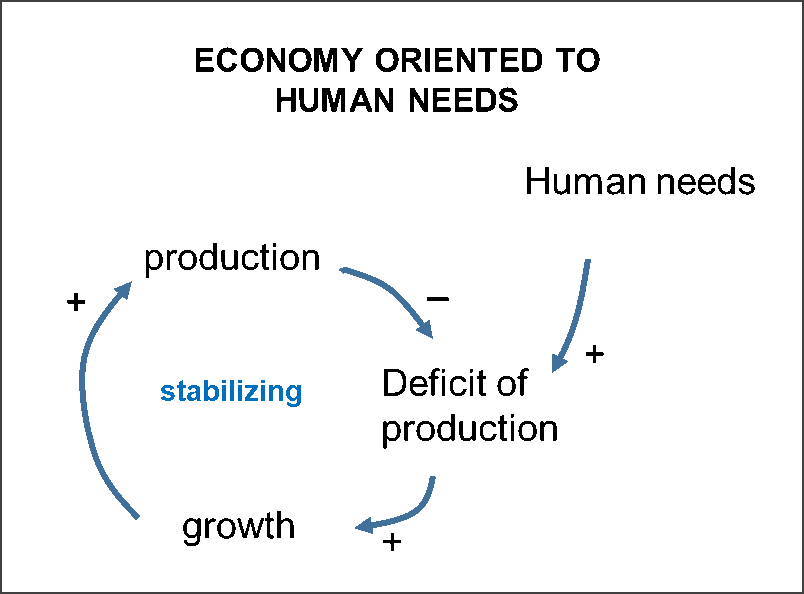
Figure 1: Dynamic pattern of an economy oriented to human needs.
Activity grows sufficiently to meet needs and, once needs are met,
stops growing. The behaviour is stable.
Click the image to enlarge
Dynamics of Artificially Inflated Targets
But the capitalist economy does not follow this pattern, nor does it have a stable behaviour. This is especially evident since the beginning of the 20th century, when Keynesian policies began to stress the importance of stimulating demand and the economy started to resemble a pattern that we call the "dynamics of the artificially inflated targets" (similar to the archetype of erosion of objectives). In this archetype, the objectives of an organization are modified by the interests of different actors and this harms the organization as a whole.
In today's economy there are two very clear mechanisms that inflate needs artificially and have been depicted in Figure 2 with the pink arrows. On the one hand, companies make profits proportional to the quantity of product sold, so they have an interest in production growth and invest in advertising to increase the needs perceived by consumers. This behaviour is self-reinforcing, because it also creates a closed loop of cause-effect relationships, but in this case all the signs are positive: the more production the more needs and the more needs the more production. All this leads to a consumerist economy that constantly increases the impact of human activities on the biosphere.
But there is another mechanism that also creates this pattern and it is more insidious. It comes from the need of the working classes to secure their livelihoods through paid employment. Since wages are also proportional to production, the working class is obliged to support increased production in order to secure its wages. Moreover, as automation decreases the number of jobs per unit of output, workers increasingly exert pressure to increase production and, in so doing, become enemies of any environmental measures that attempt to stabilize human impact within planetary limits.
This dynamics of the artificially inflated targets explains the usual conflict between environmental and labour movements that causes a particular schizophrenia within left-wing movements. On the one hand, the left supports environmentalist demands, but, on the other hand, defends the maintenance of jobs in companies whose activities are clearly unsustainable, such as automobiles or coal mines. There are very few economic sectors that can provide both new jobs and a reduction in the impact on the biosphere, therefore the conflict between jobs and ecology remains unresolved or is artificially closed with subsidies or the hope of finding "green technologies."
This dynamic of the artificially inflated targets should be taken into account much more, because we have become accustomed to admitting that creating jobs is one of the inalienable objectives of any economic policy. However, increasing the amount of human work should not be an objective, since the real objective of human life is the satisfaction of needs with the minimum of work, time and use of resources. If employment has come to be seen as a good in itself, it is because it is one of the few mechanisms for redistributing corporate profits and goods of all kinds that we have, as I argued in What if we can't create jobs?
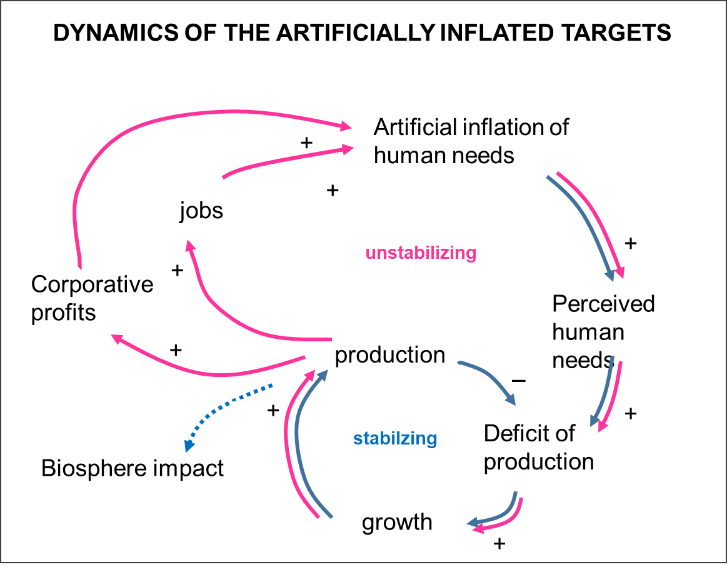
Figure 2: Dynamics of the artificially inflated targets.
The needs increase relentlessly because several actors receive benefit from the
increased production. The overall behaviour is unstable and causes production
and pressure on the biosphere to increase relentlessly.
Click the image to enlarge
Correction of the Artificially Inflated Targets
In order to neutralize these destabilizing links that create economies unable to be sustainable, it would be desirable to find formulas that decouple production from both corporate profits and wages. One way of doing this is represented in Figure 3, in which both corporate profits and wages are directly linked to the satisfaction of human needs instead of production.
Although this way of operating may seem far removed from a real economy, there are business models that come close to this behaviour. In the cooperatives of consumers of renewable electricity, for example, the consumers themselves are the owners of the company and are not interested in increasing production but in consuming as little as possible in order to pay less. Their business objective, therefore, is linked to the satisfaction of their needs, not to increases in production. Also, public enterprises that provide services such as water supply or transportation are relatively independent of production because their objective is to provide a public service.
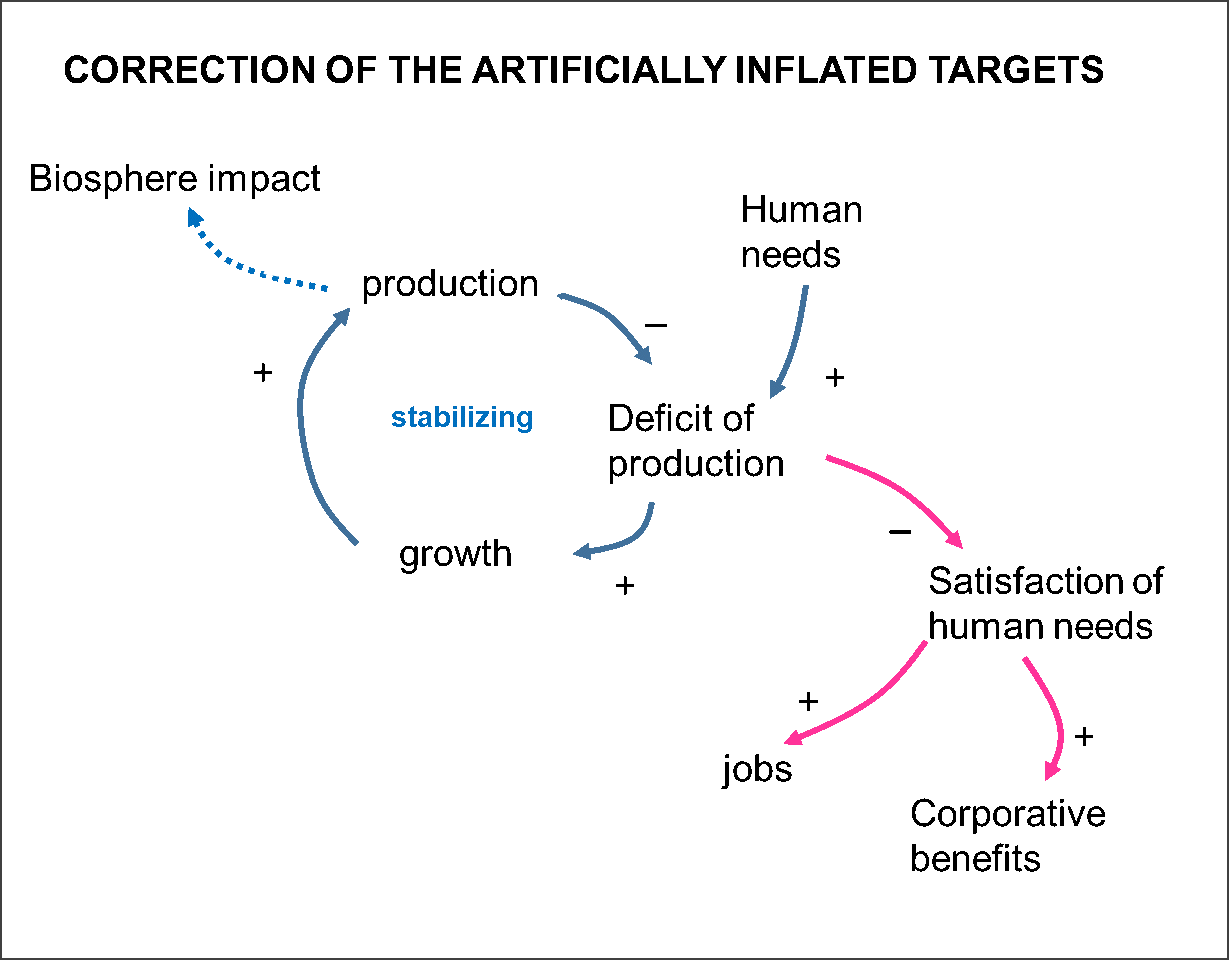
Figure 3: Correction of the artificial inflation of targets.
The way to deactivate the dynamics of target inflation is to make the remuneration
of both companies and workers not dependent on production but on the degree of
satisfaction of exogenously defined human needs.
Click the image to enlarge
Competition Dynamics
Reversing the dynamics of the artificial inflation of targets is necessary to overcome the current consumerist economy, but the design of a sustainable economy requires going further, as there are many other mechanisms that force us to grow. Most of them have to do, in one way or another, with the dynamics of competition.
Economic competition is considered a positive mechanism that stimulates technological development and market efficiency and is present in many aspects of the economic process. However, it is also one of the things that most stimulates growth because it does not allow one of the players in the economy to stabilize unilaterally at a sustainable limit while the rest continue to grow.
Figure 4 illustrates this behaviour by taking the example of competition between two firms for market shares. If firm 1's sales grow less than firm 2's, firm 2 must strive to increase its sales so that it does not fall behind its competitor. But when firm 1 increases its sales, it is firm 2 that is put at a disadvantage and is forced to grow. This creates an unstable feedback loop in the shape of an eight that has been marked in Figure 4: the two firms stimulate each other to grow.
Competition forces economic actors to grow continuously by increasing their pressure on the biosphere and makes it impossible for them to adapt to a limit until an external force imposes it on them. But if competition continues when external limits appear, the dynamic becomes a race for scarce resources in which the growth of some actors necessitates the dispossession of others.
This trend of growth of some economic actors at the expense of others is increasingly evident in the world economy, especially since the 2009 crisis, which has been «solved» on the basis of the deterioration of the life and work expectations of young people, precariousness, cutbacks, intensification of extractivism, etc. It is not surprising that this generalized deterioration coincides with the beginning of the news about the depletion of resources of all kinds, starting with oil.
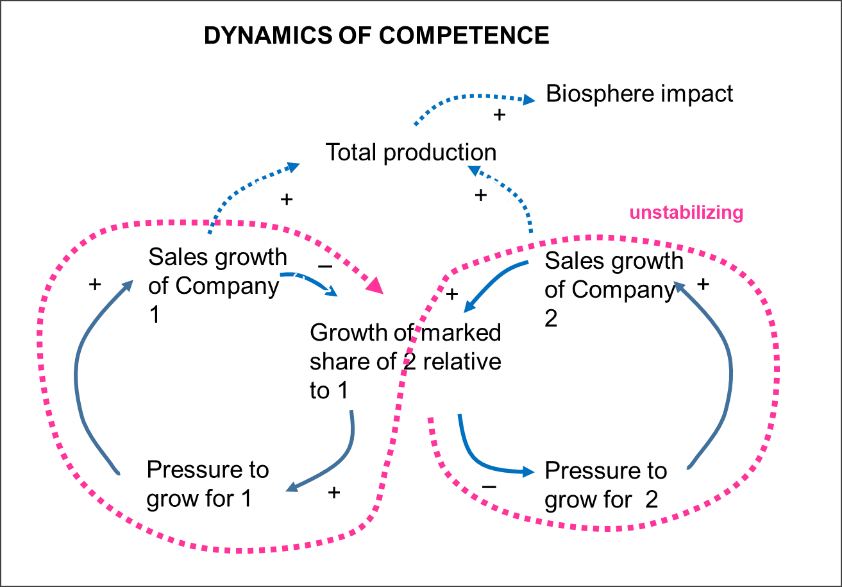
Figure 4: Competition. Production increases because economic actors
compare themselves with their competitors. The behaviour is unstable
and causes production and pressure on the biosphere to increase steadily.
Click the image to enlarge
Forum Economy
What are the mechanisms that can change the competition that forces us to grow into the cooperation that is beneficial to all actors in the economic process and to the biosphere? Can competition be controlled without resorting to centralized planning or authoritarian regimes?
The experience of consumer cooperatives may give us some clues as to how to answer these complex questions. I was able to get to know the ins and outs of such entities during my years as a member of a cooperative of consumer and organic producers, and I believe that these cooperatives provide valuable experience that can correct some of the most important shortcomings of today's economy.
The most interesting feature of a consumer cooperative is that it integrates actors from all stages of the economic process (consumers, producers, and distribution workers) and this imposes a constant negotiation between all. There are many conflicting interests among all these parties: consumers demand low prices while producers want high prices; workers and producers want to produce more to ensure their wages or sales, but also to work less to have more free time. Consumers want to consume higher quality products, but have no need to demand more than they need.
What characterizes a consumer-producer cooperative is the constant tug-of-war between the interests of all the actors and the need for the common framework to work. This requires a constant forum for dialogue where compromises must be reached to move forward an activity that is in everyone's interest. On the other hand, although the biosphere is not represented as a stakeholder, pressure from consumer partners who demand healthy food is acting in favour of doing things correctly from an environmental point of view.
The diagram in Figure 5 depicts the dynamics that occur in this forum structure. In the forum, the relative benefits of each of the actors are compared. So if, at any point, one of them is having comparatively more benefits than the rest, bargaining tends to bring their benefits into balance with those of the others. This constant bargaining among equal actors creates stabilizing feedback loops and does not form feedbacks that require growth of economic activity.
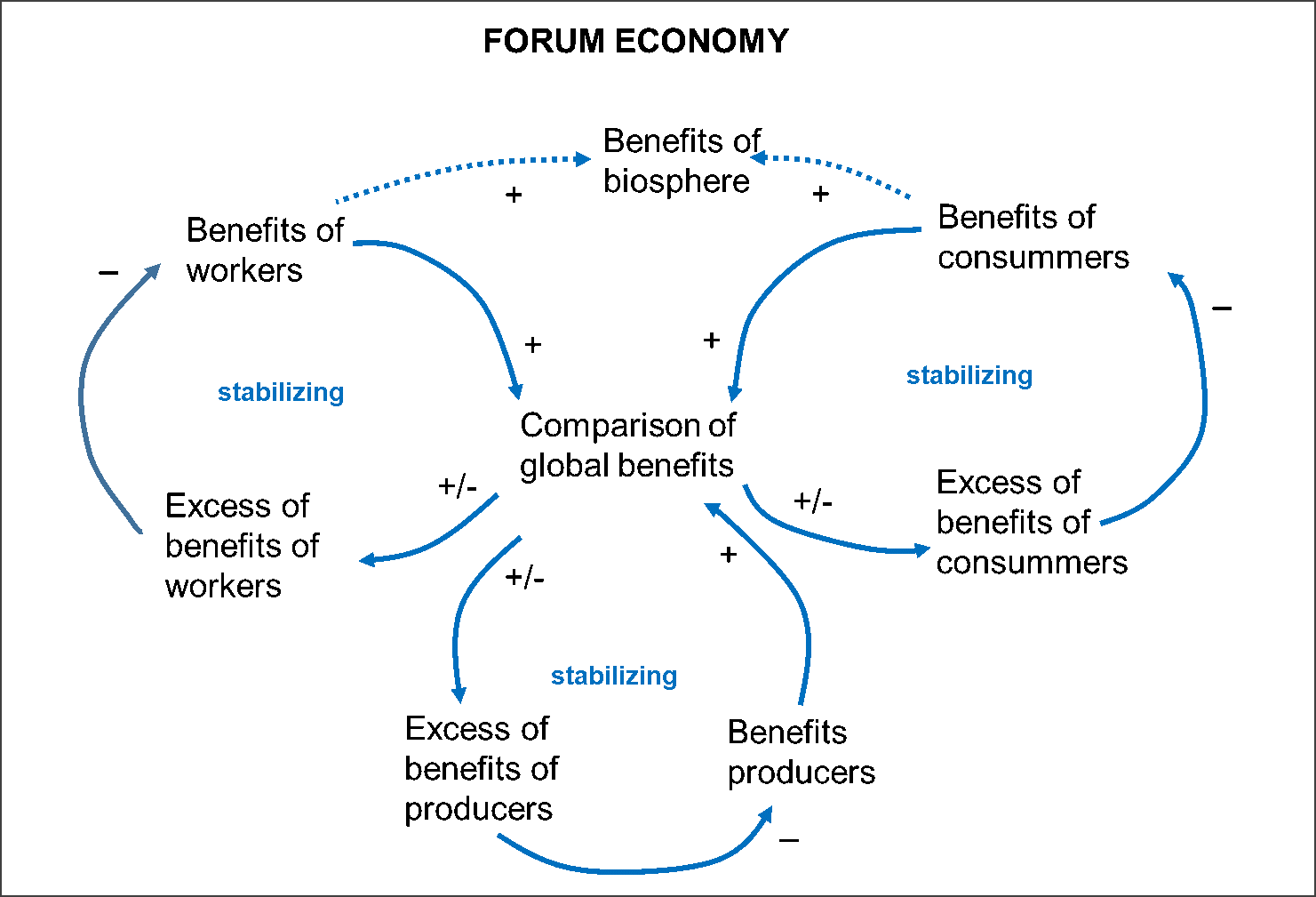
Figure 5: Forum economy. The relative benefits of all the actors involved
in the economic process are weighed in a single forum of dialogue that seeks equity
and balance of interests and acts to correct imbalances. Production does not need to
increase above the needs of consumers. The interests of consumers who demand quality
and of workers who demand less working time indirectly benefit the biosphere.
Click the image to enlarge
The idea behind this forum economy is the search for equilibrium through negotiation, and it differs from the dynamics of capitalist markets in that it attempts to bring together all the actors in the economic process. For the dynamics of the market is also a negotiation between producers and consumers, but it leaves out the workers who suffer its consequences without being able to influence it. Trade union negotiations also start from a search for balance between workers and employers, but leave out consumers. In doing so, consumers act as scabs, since they can opt for cheaper products obtained in companies that do not respect labour rights, and it destroys the bargaining power of workers.
This idea of including all the activities of the economic process in a single negotiating forum is the opposite of the trend that companies have followed in recent decades: to outsource as much as possible of the consequences of economic activity. Outsourcing breaks information links, prevents control mechanisms from being put in place and has benefited enormously from globalization. Although there are aspects of globalization that have weakened in the last decade, we still live in a highly globalized economy in which regulatory mechanisms can hardly act. Therefore, the first step in building an economy adapted to ecological limits should be to take up the proposals that the alterglobalization movement made in its day, which sought to build a globalization that was not solely economic, so that balancing mechanisms could function at both the local and global levels.
The Economic Transition
We must build new forms of social organization that allow us to create a society adapted to the limits of the planet if we do not want climate change, the decline of energy sources, and the generalized deterioration of the biosphere, to begin to be the causes of a permanent economic crisis leading to widespread recession and poverty.
Is there prosperity without growth? And can we design economies capable of providing the necessities for human beings while preserving the health of the planet? The answer to these questions should be sought in that mechanism that nature itself uses to balance ecosystems and also our own bodies, and is the basis of System Dynamics: feedback. Let us hope that this methodology, which was able to foresee 50 years ago that in 2020 we were going to face problems very similar to those we are now suffering, will help us to design a transition as less traumatic as possible in this century.
|
ABOUT THE AUTHOR
Margarita Mediavilla has a PhD in physical sciences from the University of Valladolid (Spain) and is an associate professor of systems engineering and automation at the School of Industrial Engineering. She is very active in awareness raising about the limits of economic growth, participating in all kinds of publications and conferences in the Spanish-speaking world, and is a member of the Group of Energy, Economy, and System Dynamics (GEEDS), University of Valladolid, Spain. Her personal blog is Habas Contadas.
|